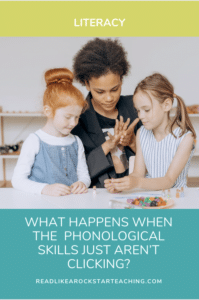
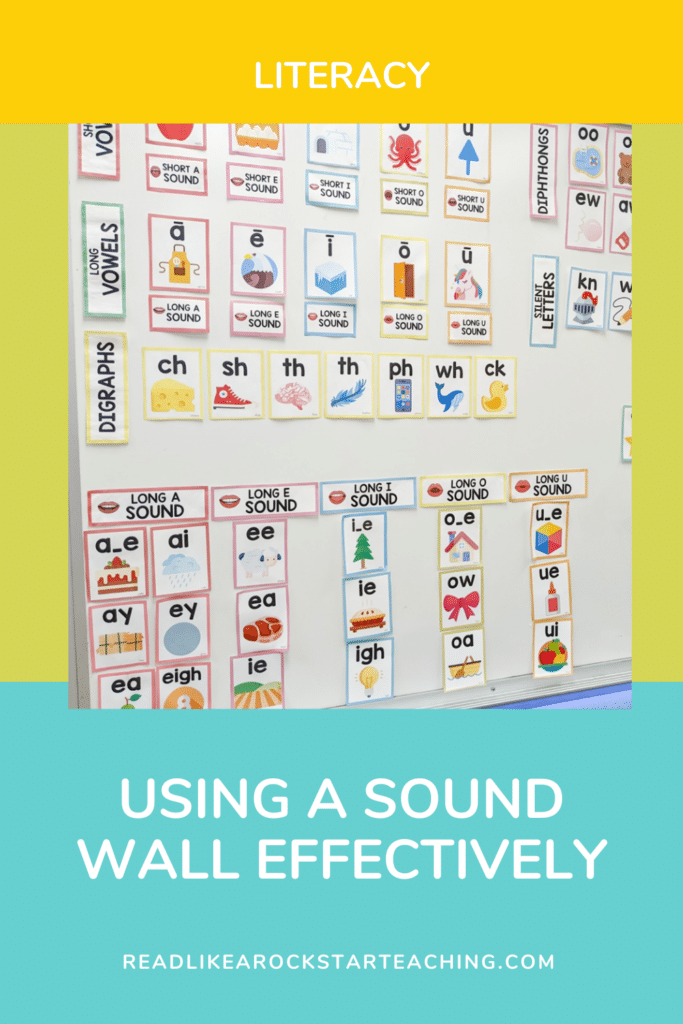
A sound wall is just what it sounds like- a place on a wall where you can organize sounds-spellings that different letter combinations can make. It’s similar to a word wall, but better! Sound cards display phonics patterns that help students learn to read in an organized, or systemic, manner. For example, a student would need to know that s and h together make a /sh/ sound, like in shoe.
The sound card would have this scaffold there for them to remember. The sounds should be grouped in meaningful ways. You may have short sounds together under the same color, digraphs together, and all the long a sounds together so that students can quickly locate the sound and spelling they need when decoding and encoding. It’s a beautiful and fun visual that helps students learn!
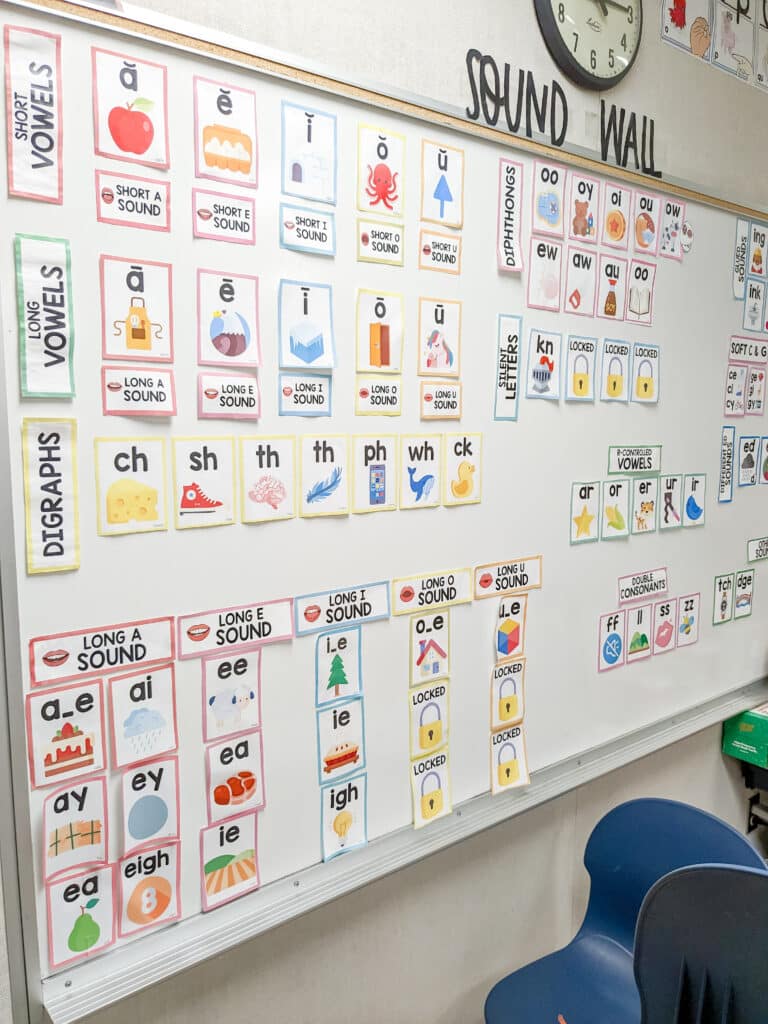
The sound wall pictured above is used for K-2.
Real photos can be used for a more mature look for 3rd-5th grade students! (Click on the image to see the resource)
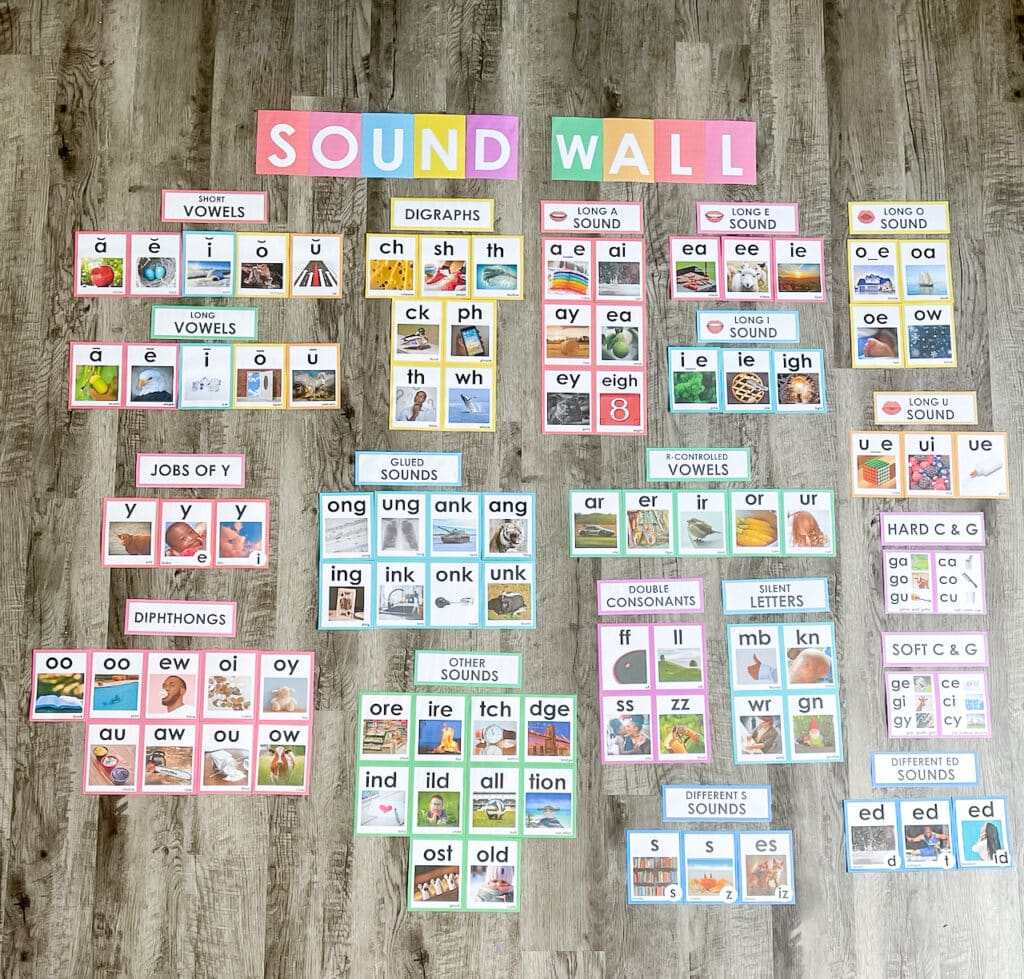
A sound wall helps teachers stay accountable for what they are teaching, and offers some mental organization for the scope and sequence they are following. Untaught sounds can stay “locked” until they are explicitly taught, at which point, they are ceremoniously uncovered. It allows students to see what they have learned and use the wall as a scaffold as they become stronger readers. It holds them accountable when they write, because they now know certain sounds. (I will also add, one does not need to choose between a word and sound wall, you can have both!)
I always teach a sound or a couple of sounds per week. My students absolutely love coming in on Mondays and seeing the new sounds that got “unlocked.” (Unlocked= the picture of the lock taken down and a sound card replacing it.)
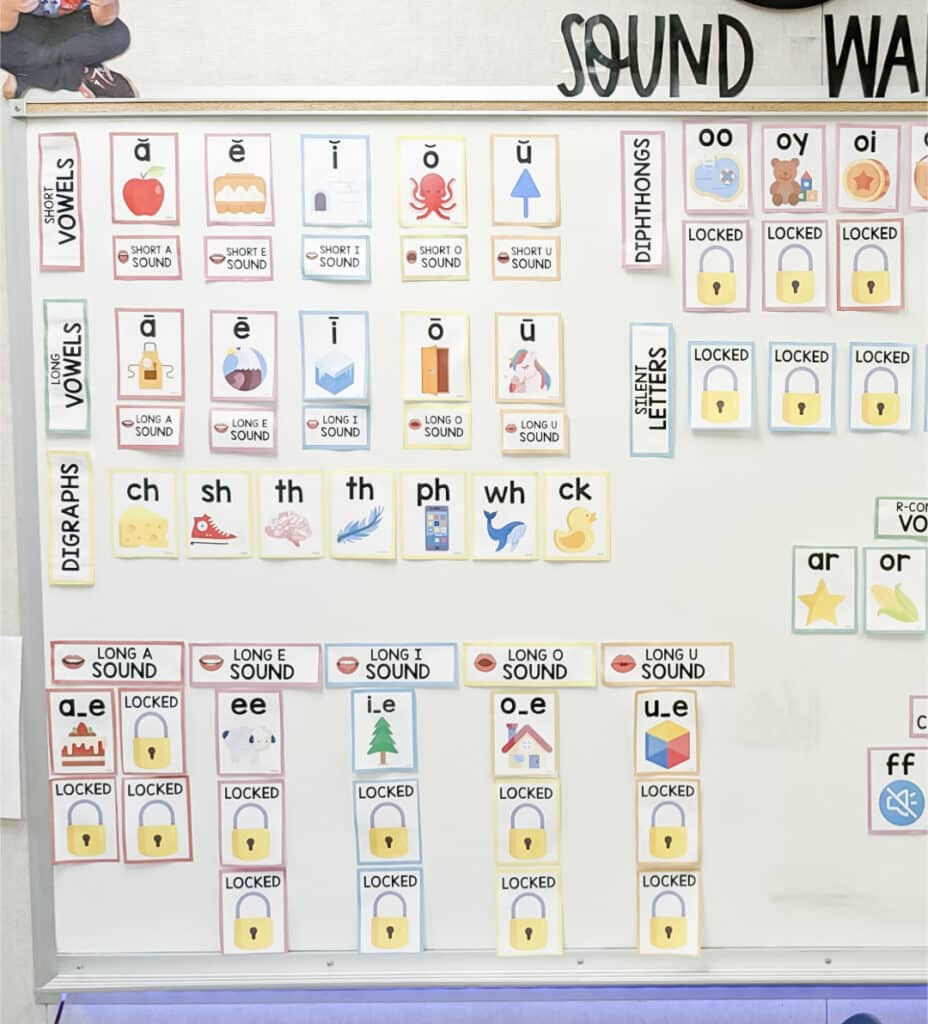
Using a sound wall effectively begins with finding out where your kids are and what they need. When you are introducing sounds, you should be starting with the easiest ones and then progress to more complex spelling patterns. More about systematic phonics can be found here.
I started the year with second graders. I took a guess about the bare minimum they must be coming in with. I began my sound wall with some sounds “unlocked,” or uncovered. It turned out most of my students didn’t yet know their a-z letters and beginning sounds. I turned all the cards back over and began again with short vowels. We have to meet students where they are. We can skip around based on what they should have learned, only what they actually know.
The most important thing to remember in using the wall is it must be an active part of your teaching/modeling throughout the day. Begin with showing students how to use the cards and where to find them on your wall.
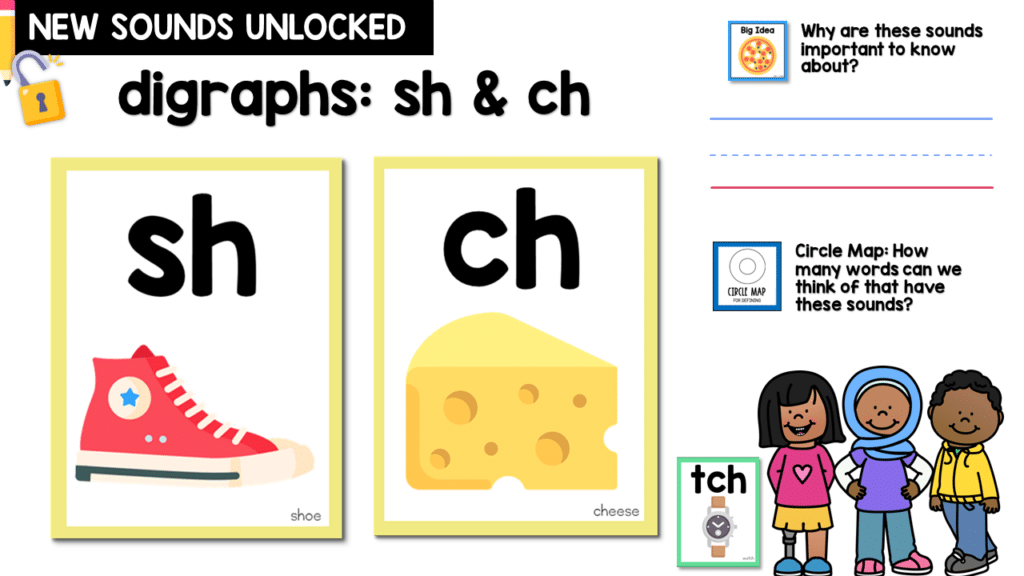
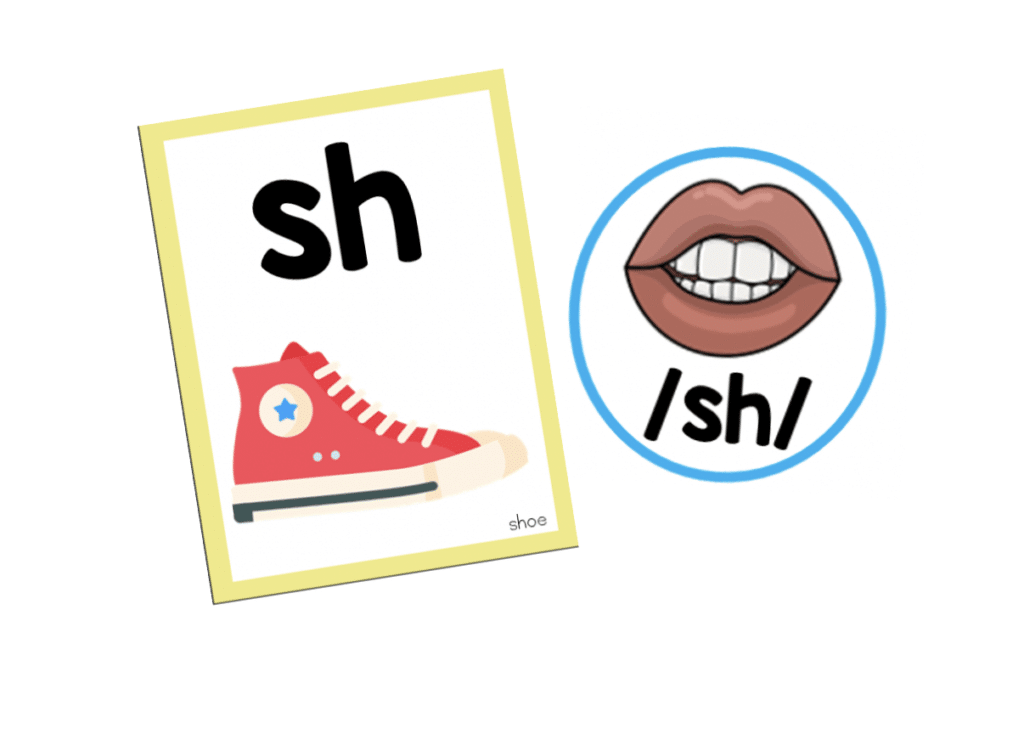
Let’s say you came to the word “python” in science class. The y does not may a /yu/ sound. Go to the wall and model. “Y sometimes makes the /long i/ sound like sky (anchor picture.) Let me try blending this again.”
The general rule is, if you don’t use it, they won’t use it. So use it. And refer to it often.
Using a sound wall effectively will help students a ton. They not only get a visual scaffold when they get stuck, but because same sounds are chunked together (all the long I cards for example,) it makes the learning stick. As time goes on, they will be able to lessen their dependency on it, so don’t worry about them relying on it too much. They will use it until they don’t need it anymore! Sound walls can be used Prek-5th, and honestly even beyond if it’s a need.
When incorporating a sound wall, don’t just throw it up and forget about it. Model and use it often. Refer to it often. Have kids practice using the sounds in different ways. I have reading membership centered around systematic phonics. I teach them to trace the letters, copy the letters, and avert their eyes and write the letters. You can of course add all the fun for novelty- sand boxes and shaving cream. As much interaction you can get is great. The slides below are routines from my reading membership.

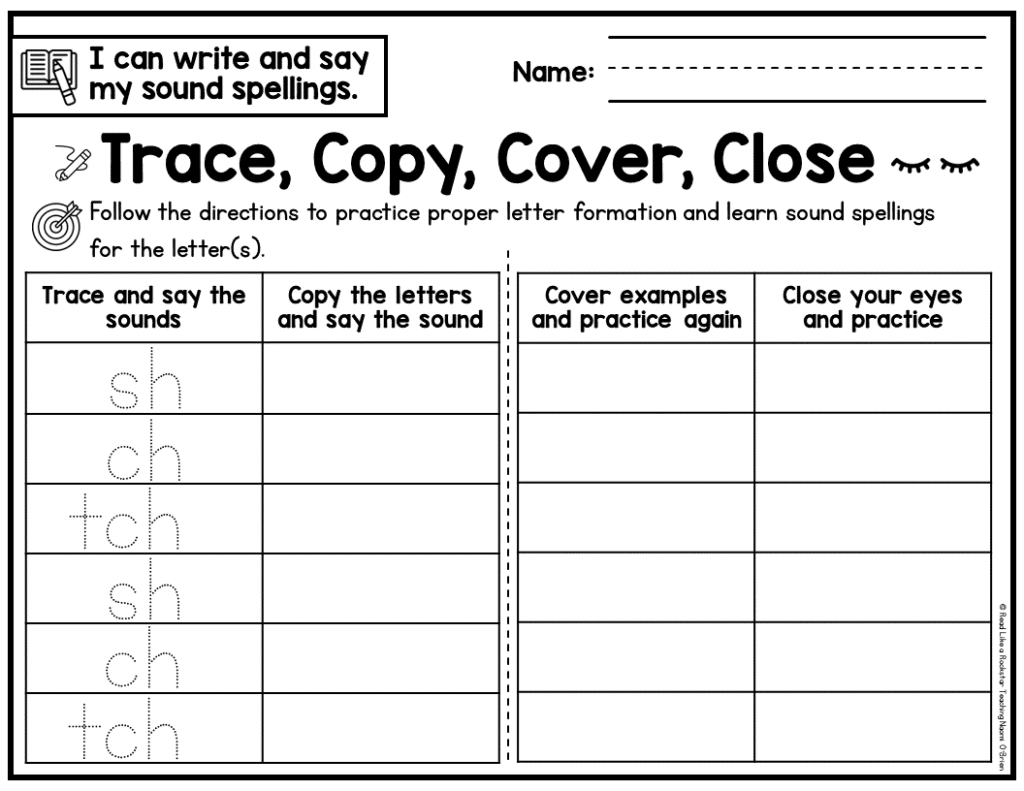
Using a sound wall effectively involves interaction. I do not cover up my wall during spelling or reading tests. Kids use it for tests, and that is perfectly fine with me. I want them to use it. The fact that they recognize the need to locate a sound-spelling and use it accurately is an amazing thing!! They will not rely on it as their learning solidifies over time.
To get started with your sound wall, make sure you informally assess your students to find out what the majority of the class needs.
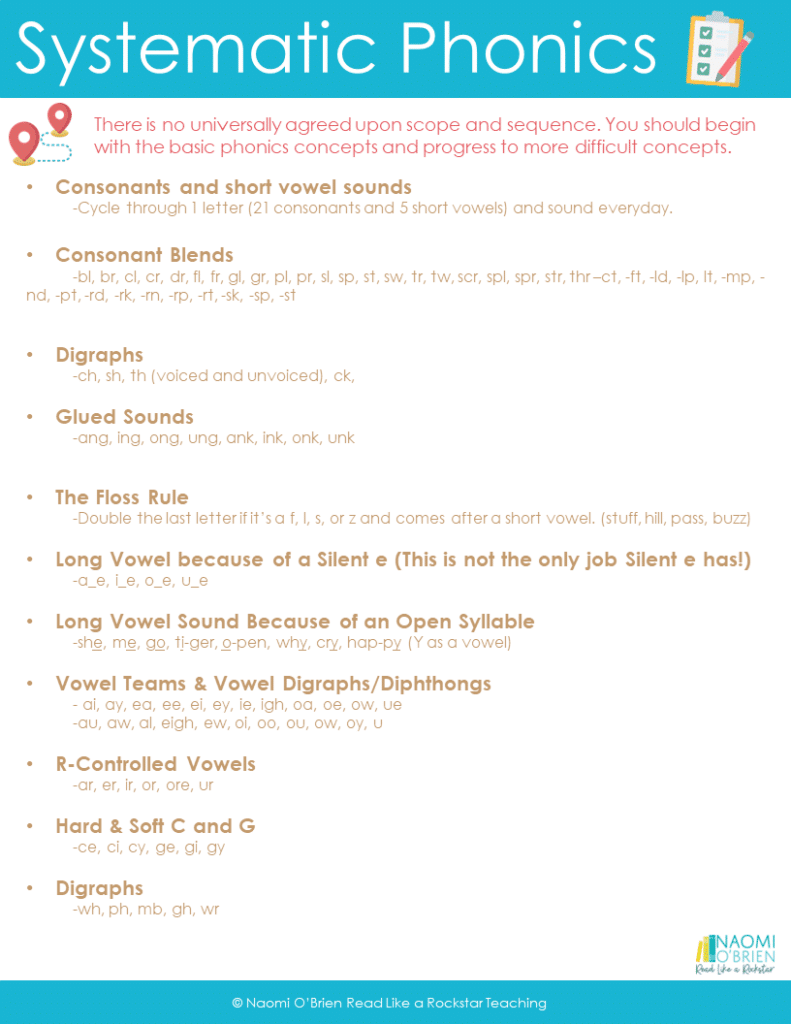
Once you find the entry point for most students, you can fill in the gaps through small groups. I had some students who raced ahead and knew more than my wall offered at the time, so we went further during small group time. I had others who were not fully caught up with all the sounds and that was ok too. We worked on catching up and reviewing in small group.
Some students with learning differences required a lot of review and we spent much of our small group time reading and writing with these sounds in order to store them to our memories. Orthographically mapping words helps students store words and sounds to memory as well. This just means that I tell my students the words and we practice sounding them out then matching the letters to the sounds. I used mini sounds reference charts to practice at the small group table.
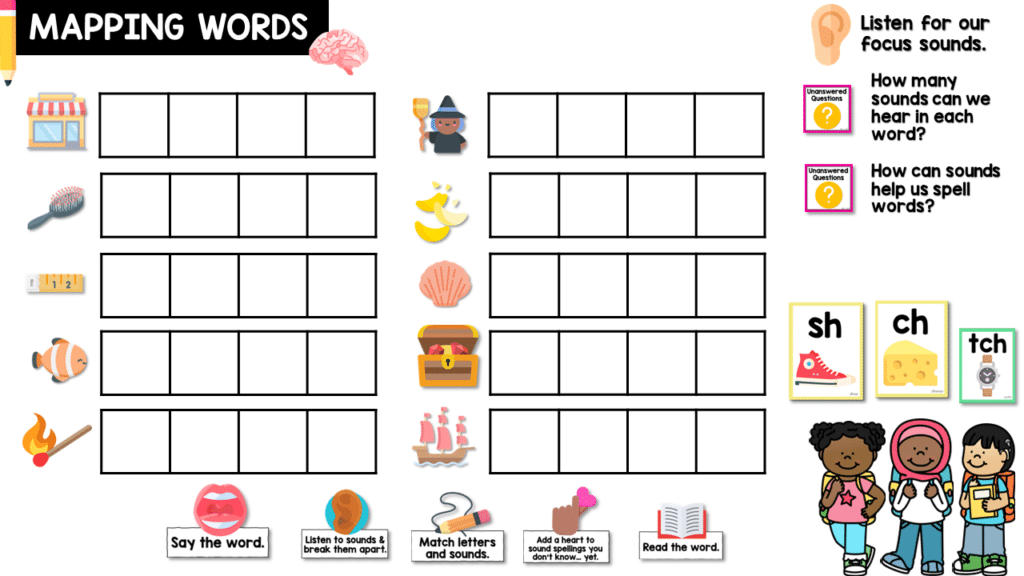
Click the image below to purchase my sound wall.
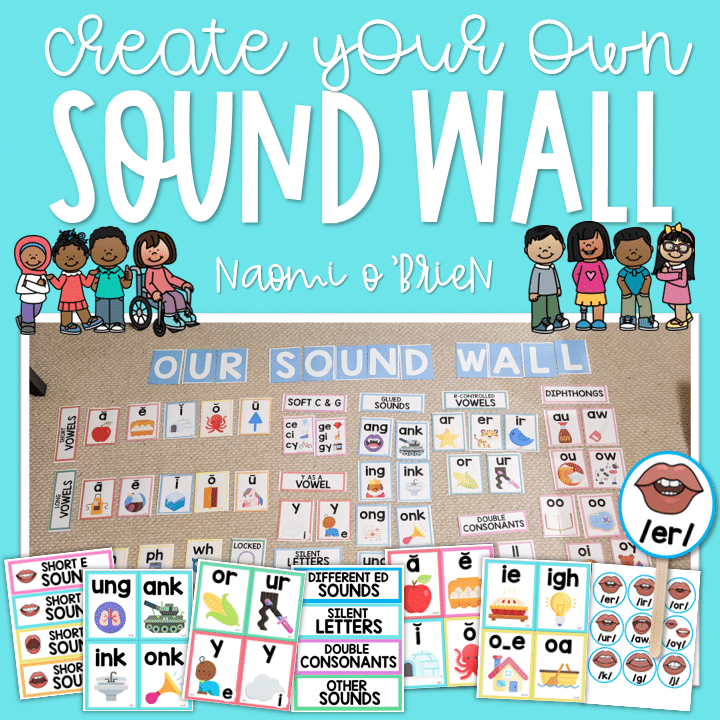
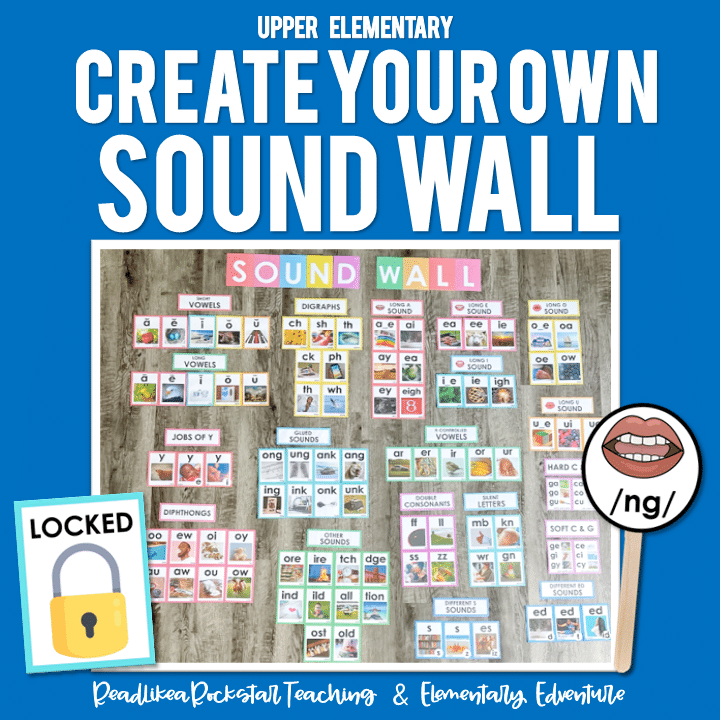
If using a sound wall effectively and teaching students how to become successful readers still sounds daunting… don’t worry. I’ve got you! Let me be your Science of Reading Coach. I have taken care of all the work for you. I created a 46 week program which covers all the reading (decoding) needs from kindergarten through second grade. We begin with short a and end with prefixes. You can check out 3 free weeks here. The membership will give you lessons, printables, aligned decodables, extra worksheet help, assessments, training videos, and tests! Good luck!
*School purchase orders are accepted.
*Classroom licenses available.
*Contact [email protected] for district licensing
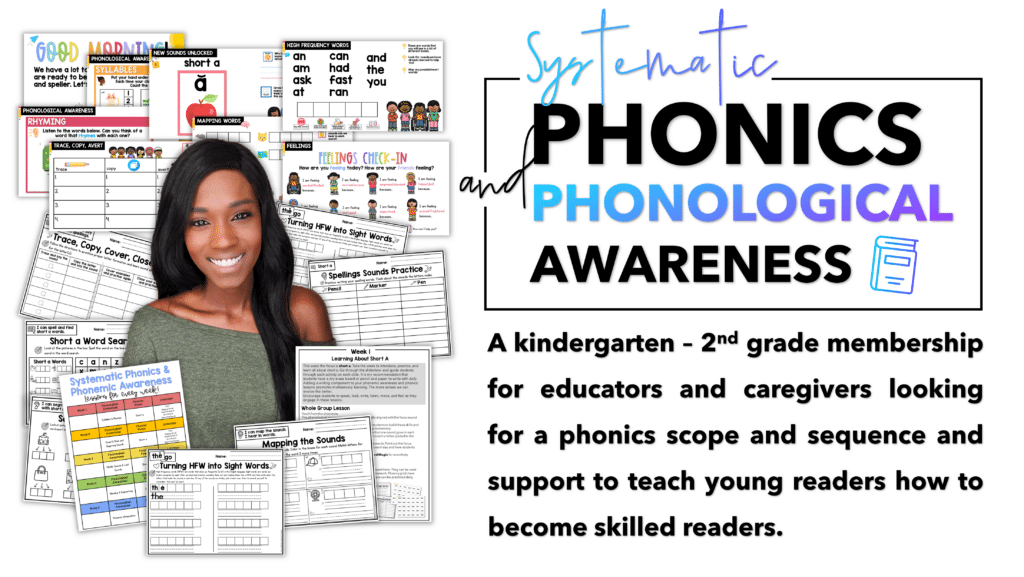
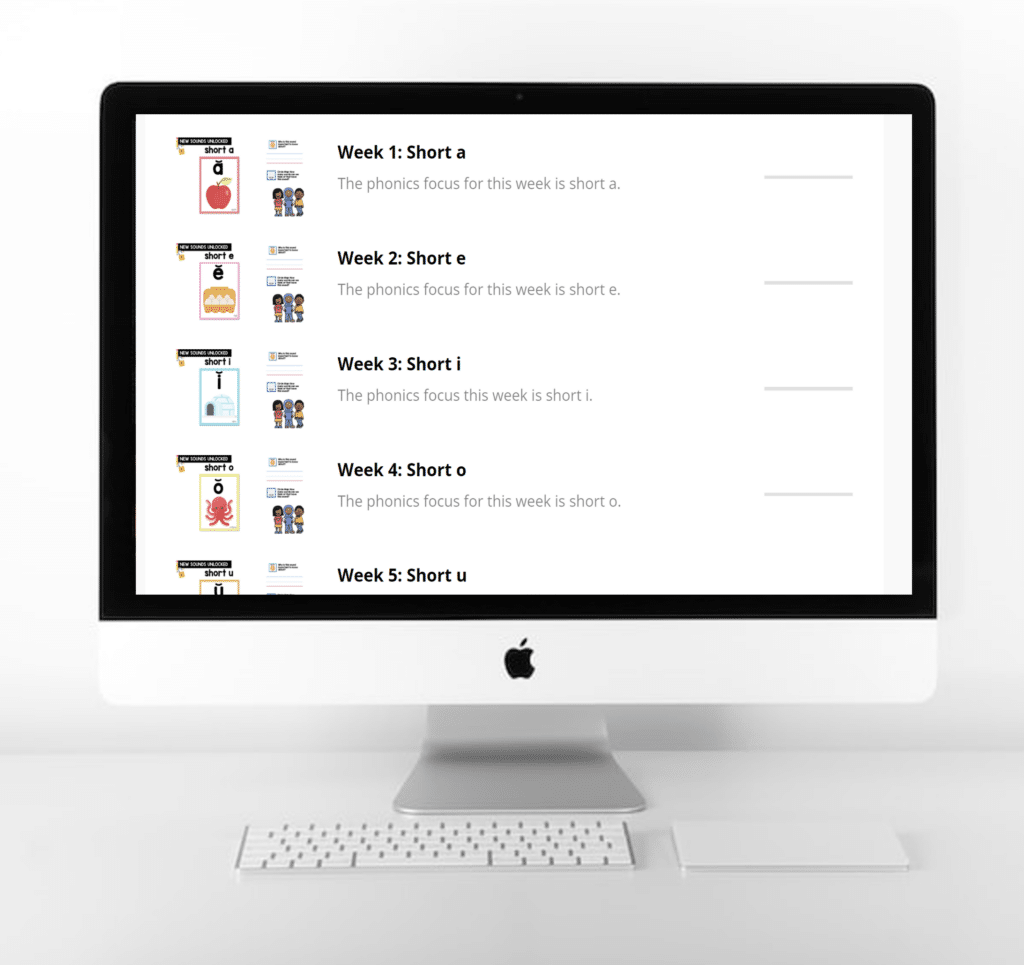
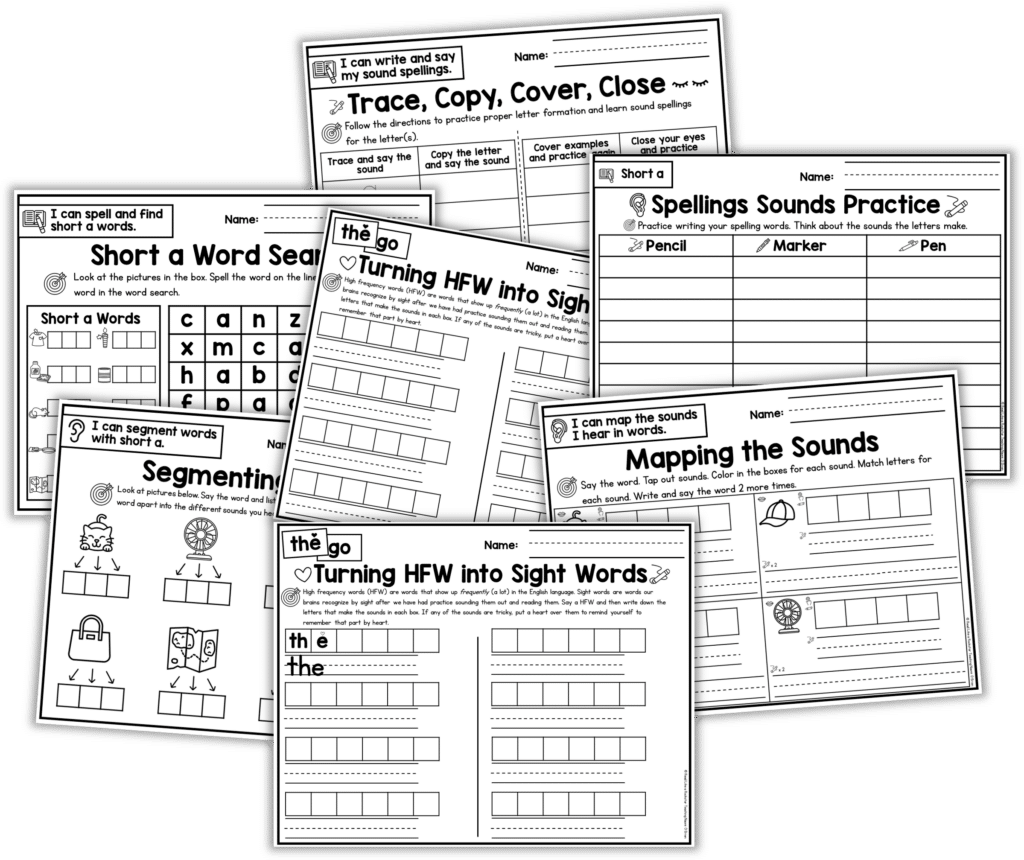
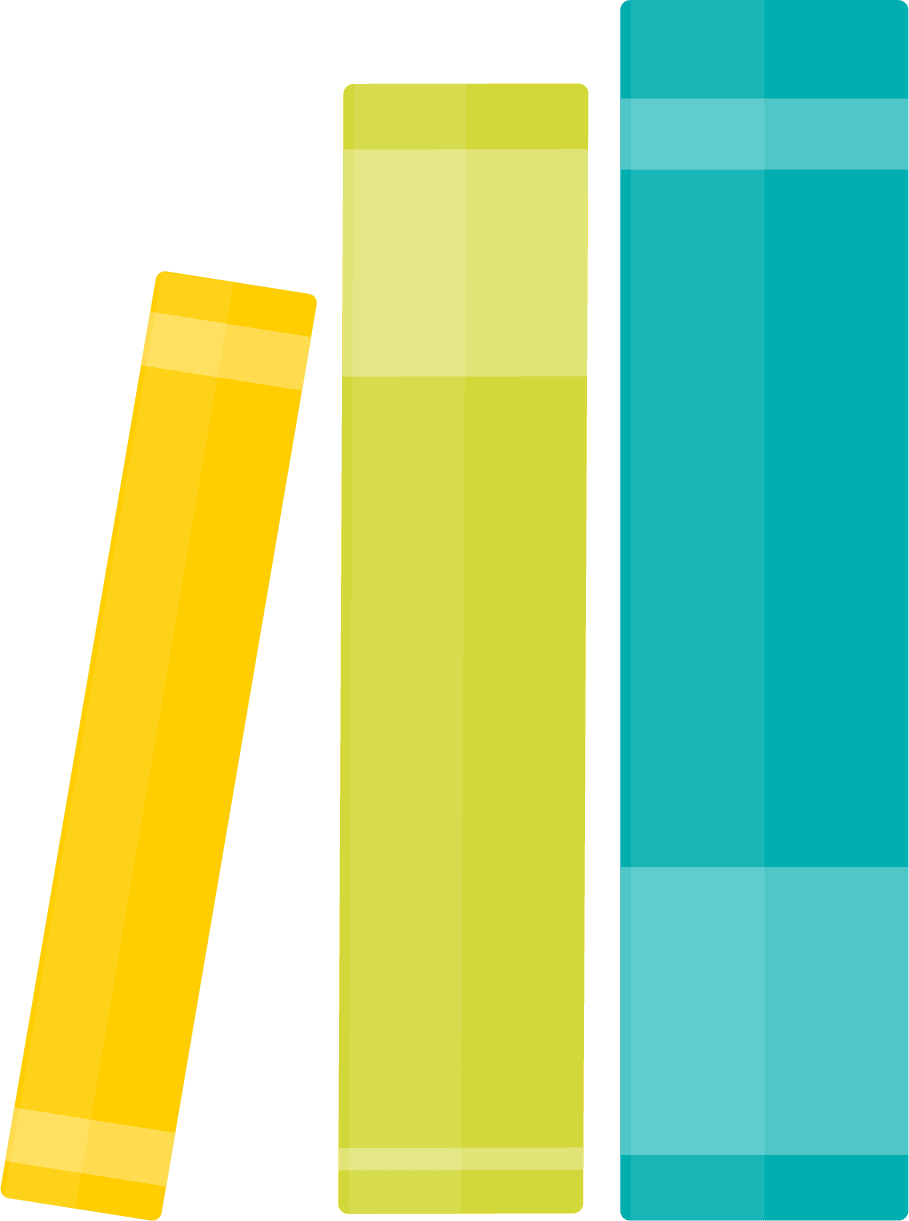

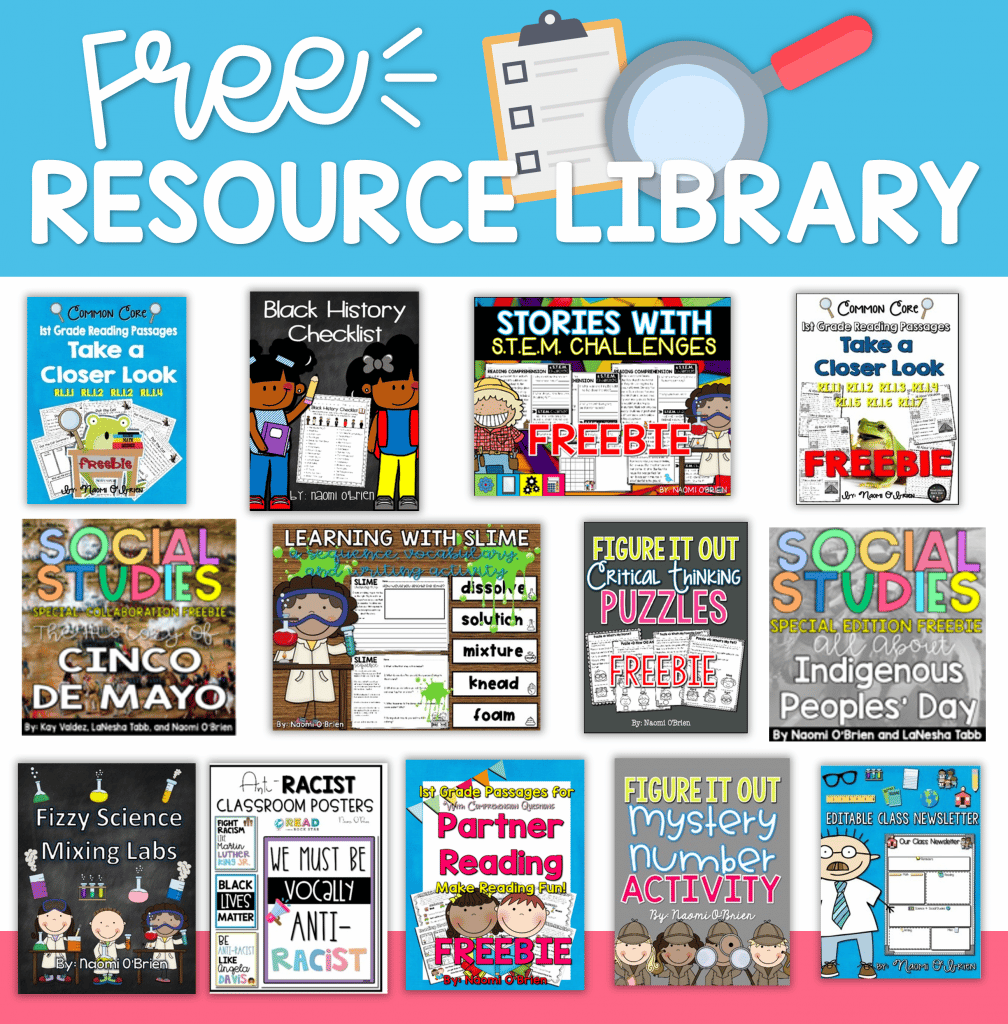
| Cookie | Duration | Description |
|---|---|---|
| cookielawinfo-checkbox-analytics | 11 months | This cookie is set by GDPR Cookie Consent plugin. The cookie is used to store the user consent for the cookies in the category "Analytics". |
| cookielawinfo-checkbox-functional | 11 months | The cookie is set by GDPR cookie consent to record the user consent for the cookies in the category "Functional". |
| cookielawinfo-checkbox-necessary | 11 months | This cookie is set by GDPR Cookie Consent plugin. The cookies is used to store the user consent for the cookies in the category "Necessary". |
| cookielawinfo-checkbox-others | 11 months | This cookie is set by GDPR Cookie Consent plugin. The cookie is used to store the user consent for the cookies in the category "Other. |
| cookielawinfo-checkbox-performance | 11 months | This cookie is set by GDPR Cookie Consent plugin. The cookie is used to store the user consent for the cookies in the category "Performance". |
| viewed_cookie_policy | 11 months | The cookie is set by the GDPR Cookie Consent plugin and is used to store whether or not user has consented to the use of cookies. It does not store any personal data. |
Thank you for your interest in booking a private professional development experience! Please fill out our Booking Inquiry form and a member of our team will contact you soon.
One Response
So, if I am reading correctly, a sound wall and word wall are different. In a kindergarten class, will I have both walls posted (sound wall and sight word)? Or just a sound wall? Where will I post sight words? Do I need to post sight words? I am asking because there is a difference of opinion where I teach. It isn’t a power struggle, but a joint effort to do what is right for the students.